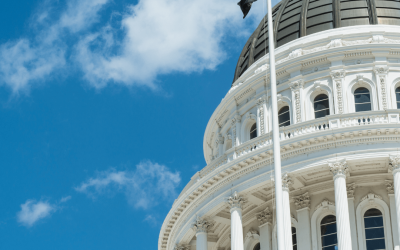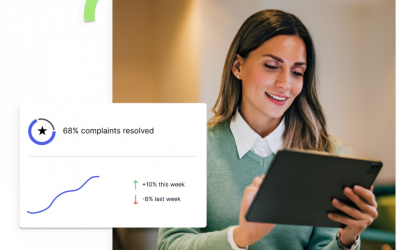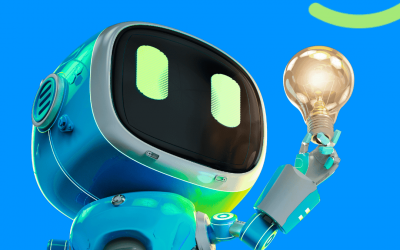In nearly every industry, conversations surrounding artificial intelligence (AI) are inescapable, given its significant influence on the global economy and workforce dynamics. With an estimated $200 billion being invested into AI-related technologies by 2025, the paradigm of work as we know it is shifting.
Experts anticipate increased productivity as roles are automated, augmented, or otherwise transformed by AI, which will lead to over-staffing and accelerate the shift to a skills-based labor market. As a result, there is an increasing demand for employees to deepen their AI literacy and develop skills that are complementary to new AI technologies, especially in areas requiring human insight and specialized industry knowledge.
In this evolving landscape, employers must make data-driven decision-making a priority in order to identify high-potential employees and implement reskilling and upskilling programs to retain their top talent.
Here’s how to use people analytics and prescriptive AI to predict employee behavior and implement the improvements critical employees demand.
How to use AI to elevate people analytics
While generative AI—the AI used to create text and images—is what garners news headlines, it’s predictive AI that’s doing the heavy-lifting in many of today’s industries, including HR. Predictive AI learns from data to recognize patterns and make predictions based on these patterns. From here, prescriptive AI can outline the best course of action to address or mitigate these outcomes.
Analyzing data sets
HR analytics tools are using predictive AI to transform the way organizations summarize and explain large, diverse datasets, enabling the rapid delivery of metrics and insights with personalized views that cater to the needs of every role in your organization, from C-suite executives to frontline managers.
Combining people data with business data allows leaders to make informed decisions regarding talent management, total rewards, and workforce initiatives such as Diversity, Equity, and Inclusion (DEI) and recruiting. This approach also identifies both high performers (who are essential to retain, value, and develop) and underperformers (who may need more training, performance monitoring, or to transition out of the organization). In some industries, notably the tech sector, there’s a trend of employees being laid off rather than leaving voluntarily, indicating a shift since the post-Covid Great Resignation.
One practical application of AI in people analytics is the development of a flight risk model. This predictive HR analytics tool assists organizations in identifying employees who are most likely to leave, allowing for proactive intervention to retain top talent or make informed decisions when layoffs are necessary. Predictive analytics means companies can better understand employee turnover patterns so they can implement targeted strategies to mitigate those risks.
Prescribing solutions
Continuing with the flight risk model example, prescriptive analytics goes beyond merely predicting which employees might leave. It actively considers various strategies for retention and their potential effectiveness based on historical data, industry benchmarks, and real-time feedback loops from current retention initiatives.
The prescriptive AI analyzes the flight risk scores in conjunction with the company’s existing retention strategies to recommend personalized actions for each high-risk employee. Based on data from candidate pools, historical pay patterns, and employee benefits, these recommendations are aimed at addressing the reasons specific employee populations might consider leaving. Individualized strategies could include pay changes, promotions, early retirement, or simply presenting a total compensation statement to better understand their rewards.
Coupling predictive and prescriptive analytics identifies interventions that are not only strategic and evidence-based, but also highly personalized. This dual approach ensures that HR efforts are not wasted on broad, ineffective solutions but are instead directed in a manner that is most likely to increase employee satisfaction and loyalty, ultimately retaining top talent.
Monitoring and trend analysis
In the ever-changing landscape of talent management, AI plays a crucial role in monitoring the effectiveness of interventions and program changes in real-time. This capability not only provides immediate insights into the impact of specific strategies but also creates a feedback loop that refines and improves future recommendations to make them more effective. Through analyzing outcomes and employee responses to retention initiatives, AI systems become increasingly adept at predicting what measures will best enhance employee retention and satisfaction. This machine learning process ensures that organizations can stay ahead of potential turnover trends and address issues as they arise, rather than reacting to them after the fact.
Of course, it goes without saying that the use of AI does not replace the critical role of human decision-makers but, instead, augments it. By combining the strategic insights of AI with the nuanced understanding of organizational culture and decision-making abilities of human managers, companies can create more effective retention strategies.
In turn, the symbiotic relationship between AI and human management leads to a more engaging and supportive work environment that is responsive to the changing dynamics of the workforce.
The bottom line
Leveraging AI in people analytics is a progressive approach to managing and retaining employees. Integrating predictive and prescriptive AI models into human resources strategies means organizations can move beyond outdated reactive methods, opting instead for a proactive approach that not only anticipates but also addresses the evolving needs of their unique workforce.
To learn more about how your organization can leverage this advanced technology to make data-driven decisions and better support your employees, connect with ZeroedIn today.




